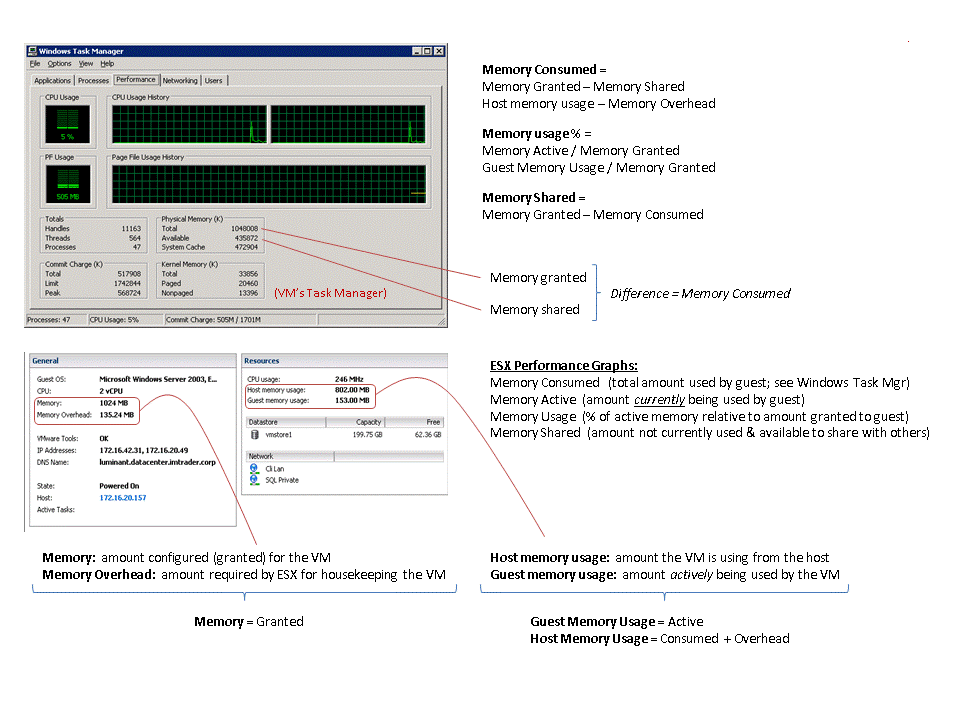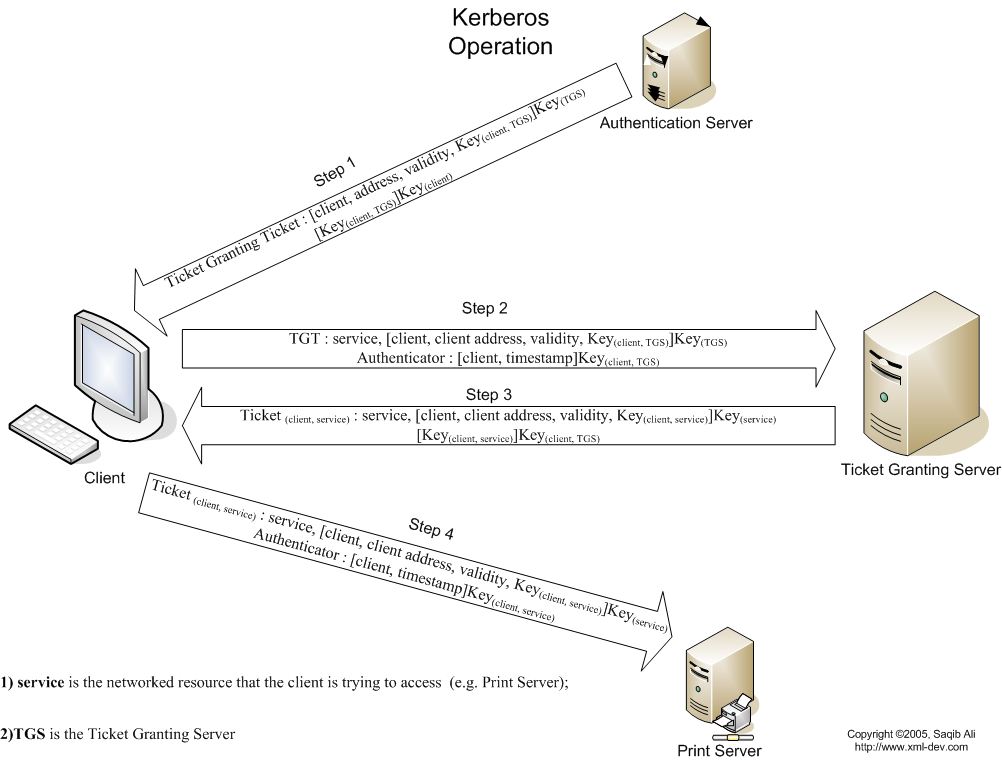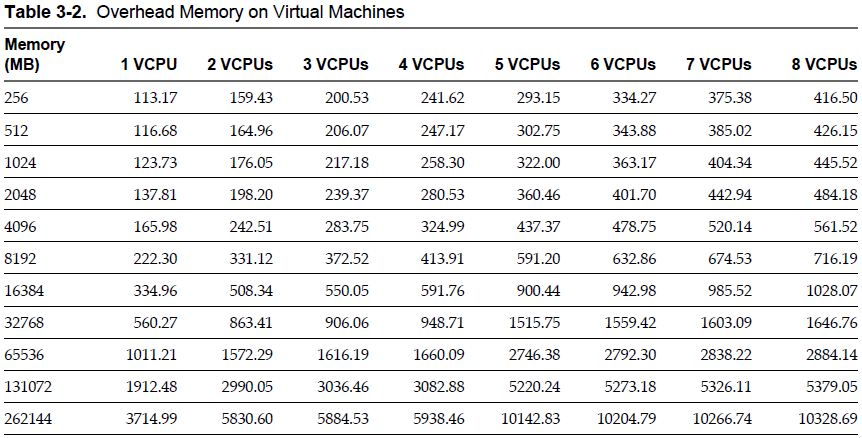Great pic showing Memory calculations from VMware
Archive for March 2012
What is Kerberos and how does it work?
I couldn’t have written it better myself so here’s a link to a blog on Kerberos and IIS and cross domain trusts.
How Kerberos Works
The current version of Kerberos is v5, which was developed in 1993. This is the version on which Microsoft’s implementation in Windows 2000/XP/Server 2003 is based. Windows 2000 and Server 2003 native mode domains use Kerberos by default. Domains that must authenticate NT systems along with the newer operating systems must use NT LAN Manager (NTLM) authentication.
Kerberos was named after Cerberus, the three-headed dog of Greek mythology, because of its three components
- A Key Distribution Center (KDC), which is a server that has two components: an Authentication Server and a Ticket Granting Service.
- The client (user)
- The server that the client wants to access
Logon process works with Kerberos as the authentication method
- To log on to the network, the user provides an account name and password.
- The Authentication Server (AS) component of the KDC accesses Active Directory user account information to verify the credentials.
- The KDC grants a Ticket Getting Ticket (TGT) that allows the user to get session tickets to access servers in the domain, without having to enter the credentials again (the TGT is good for 10 hours by default; this expiration period can be configured by the administrator).
- When the user attempts to access resources on a server in the domain, the TGT is used to make the request. The client presents the TGT to the KDC to obtain a service ticket.
- The Ticket Granting Service (TGS) component of the KDC authenticates the TGT and then grants a service ticket. The service ticket consists of a ticket and a session key. A service ticket is created for the client and the server that the client wants to access.
- The client presents the service ticket to create a session with the service on the server. The server uses its key to decrypt the information from the TGS, and the client is authenticated to the server.
- If mutual authentication is enabled, the server also authenticates to the client
Virtual Machine Overhead
VM’s host memory usage = VM’s guest memory size + VM’s overhead memory
Each VM running on an vSphere consumes some memory overhead additional to the current usage of its configured memory. This extra memory is needed by ESX for the internal datastructures like virtual machine frame buffer and mapping table for memory translation (mapping guest physical memory to the actual machine memory)
- Virtual machine frame buffer
A framebuffer is a video output device that drives a video display from a memory buffer containing a complete frame of data.
- Mapping table for memory translation – Mapping guest physical memory to the actual machine memory)
The VMM is responsible for mapping guest physical memory to the actual machine memory, and it uses shadow page tables to accelerate the mappings. As depicted
by the red line in the diagram, the VMM uses TLB (translation lookaside buffer) hardware to map the virtual memory directly to the machine memory to avoid the two levels of translation on every access. When the guest OS changes the virtual memory to physical memory mapping, the VMM updates the shadow page tables to enable a direct lookup.
Static overhead
This is the minimum amount of memory needed to start/boot the VM. DRS and the VMkernel uses this metric for admission control and VMotion calculations. The destination host must be able to back the virtual machine reservation and the static overhead otherwise the VMotion will fail.
Dynamic overhead
When the VM is powered on, the virtual machine monitor (VMM) can request additional memory space. The VMM will request the space, but the VMkernel is not required to supply it. If the VMM does not obtain the extra memory space, the virtual machine will continue to function but this can lead to performance degradation. The VMkernel treats virtual machine overhead reservation the same as VM-level memory reservation and it will not reclaim this
Memory Overhead Table






